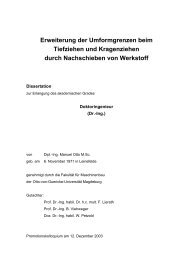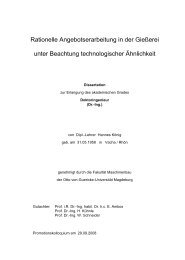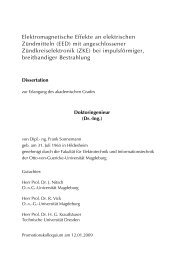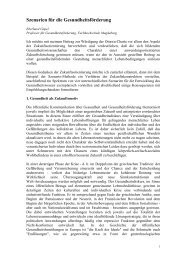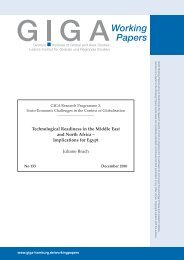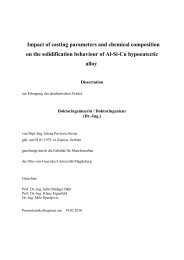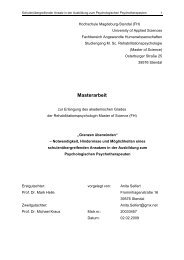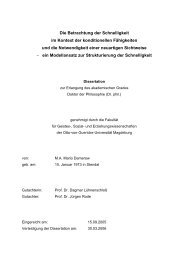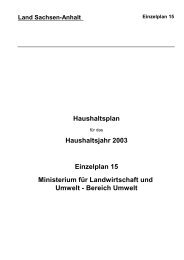Chapter 1
Chapter 1
Chapter 1
Create successful ePaper yourself
Turn your PDF publications into a flip-book with our unique Google optimized e-Paper software.
several industrial zones. Despite these efforts, the cost of pol- develop the industry resulted in policies that did not approlution<br />
control and prevention has yet to be integrated into priately price the economic value of tourism assets. The<br />
the concerns of industrialists, since monitoring is weak, there country learned from the mistakes of haphazard planning<br />
are no pollution taxes, and most industries regard pollution during the early years of development (1965-80), when the<br />
control as a burden that undermines profitability. The Government provided fiscal and financial advantages for<br />
Government has avoided imposing pollution taxes and the seaside developments built along coastal dunes that caused<br />
Unified Investment Code introduces incentives whereby a serious long-term erosion problems. After initially neglectfirm<br />
can receive up to 20 percent of the investment cost for ing adequate infrastructure (water and sanitation), during<br />
depollution activities. An antipollution fund (FODEP) gives the 1980s, the Government (under ONAS) developed a sysan<br />
additional subsidy for pollution abatement investment. tem for wastewater treatment for coastal areas superior to<br />
This approach does not follow the "polluter pays principle" that in many Mediterranean countries. Since the early<br />
used in many OECD and Eastern European countries, 1980s, environmental concerns have gradually become<br />
whereby the government raises funds from pollution taxes, more integrally linked with tourism development. The<br />
reducing the need for investment subsidies. Unified Investment Code (1994) makes further progress in<br />
Although the Government supports the concept of mak- correcting incentive distortions (see chapter 3, sections on<br />
ing the polluter pay, at this stage it is trying to promote com- domestic and foreign investment liberalization).' The new<br />
pliance through establishing industry norms of energy code removes preferential interest rates for tourism and<br />
efficiency and a broad-based prevention framework. These encourages hotels to introduce technologies that improve<br />
efforts combine regulations with incentives to use renewable energy efficiency. Tourist establishments must now pay the<br />
energies, natural gas and solar for final energy use, monitor- full cost of water, energy, and land, and pay a 0.5 percent tax<br />
ing and enforcement, and negotiated agreements between on tourist revenues to finance projects to clean up and<br />
specific enterprises to dean-up polluted areas and promote improve tourist towns and coastal areas.<br />
clean industrial growth. Even stronger efforts are needed to Despite these efforts, tourism development plans face<br />
make full use of the most cost-effective means of controlling environmental and social constraints to growth: (1) lack of<br />
pollution-cost recovery and pollution charges. water resources and insufficient sanitation infrastructure;<br />
The estimated cost of health problems in Tunisia (loss of (2) ecologically fragile areas; and (3) haphazard urban<br />
life, disability, and health care costs) caused by air pollution development, which frequently results from large-scale<br />
is US$595 million per year, and the estimated investment tourism development and the rapid migration of workers to<br />
requirement to provide drinking water, sanitation, industrial the area. To limit the mass tourism development that has<br />
pollution abatement, and natural resource management is degraded so many other coastal areas around the<br />
in the range of US$190-260 million per year over the next Mediterranean, the Government will need to reduce the<br />
ten years. By charging prices that fully recover the costs of physical size (number of beds) of its development plans,<br />
water and energy provision, the Government could gener- particularly in areas that are erosion-prone and pose probate<br />
an estimated additional US$484 million per year. lems in terms of water and sanitation. From the environ-<br />
Pollution charges would generate US$152 million per year, mental and social point of view, it is preferable to develop<br />
and the elimination of remaining subsidies in agriculture, fewer tourist sites that attract one visitor spending TD 120<br />
industry and tourism, another US$20 million. Even if these per day rather than three visitors spending TD 40 per day.<br />
recovery costs and pollution charges are introduced gradu- High value tourism (characterized by smaller and fewer sites<br />
ally, the potential revenue generated would help cover the and fewer people) places less stress on fragile areas, and it<br />
anticipated health and investment costs and would con- requires a more skilled work force that increases the valuetribute<br />
to the objective of lowering such costs in the future. added of the sector to the economy. To develop luxury<br />
tourism successfully, Tunisia may need to cooperate more<br />
Tourism and coastal zone management closely with foreign partners who have the know-how and<br />
expertise to design and construct luxury resorts, manage<br />
Tourism development has had a positive impact on height- them properly, and market them effectively among a more<br />
ening environmental concerns in Tunisia. But the desire to discriminating clientele.<br />
26 TUNISLi!S GLoBAL LNTEGRATION AND SusTAinABLE DEVELOPMENT STRATEGIC CHOICES FOR THE 21ST CENTURY




